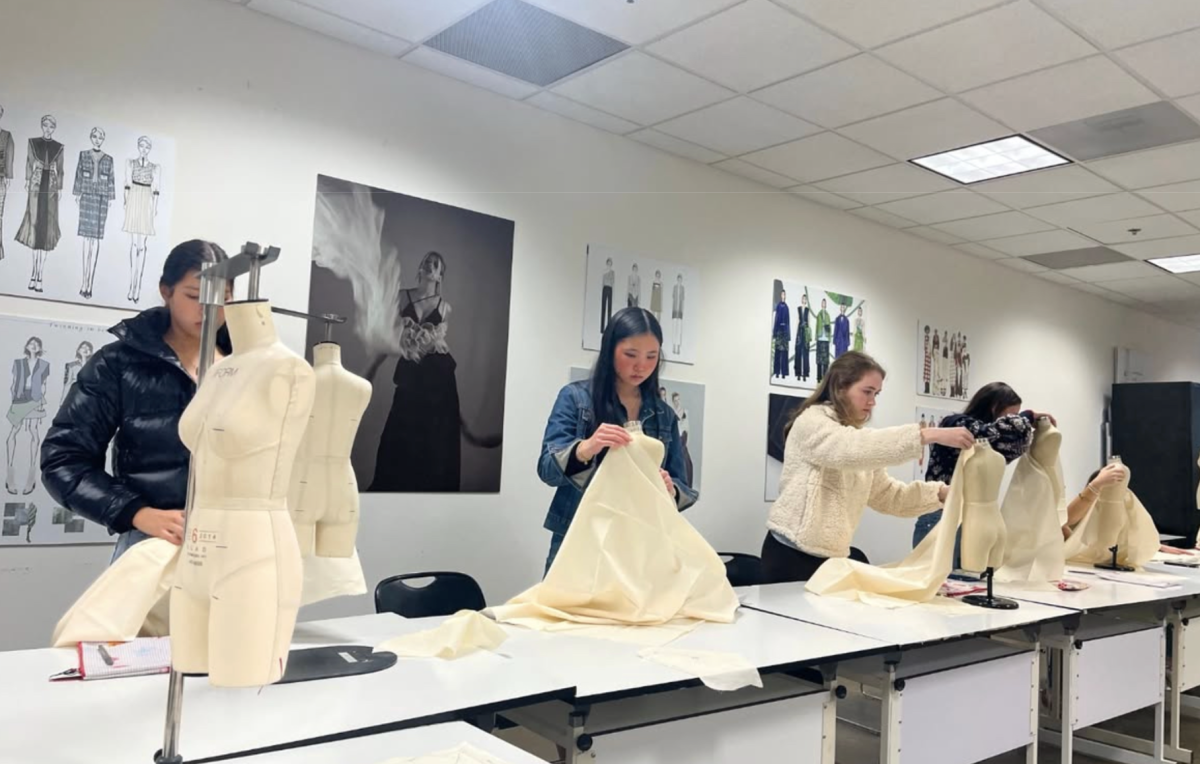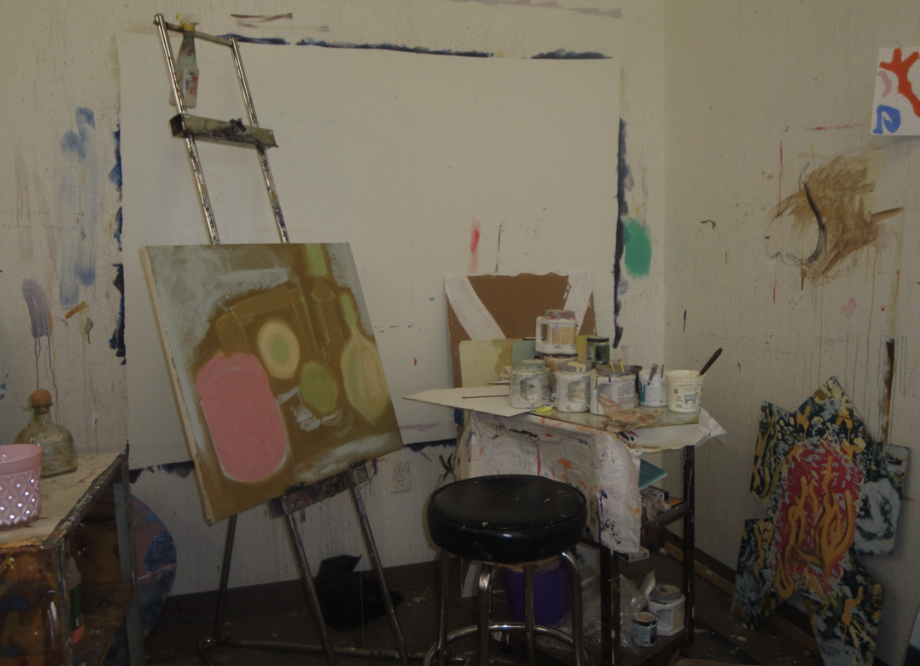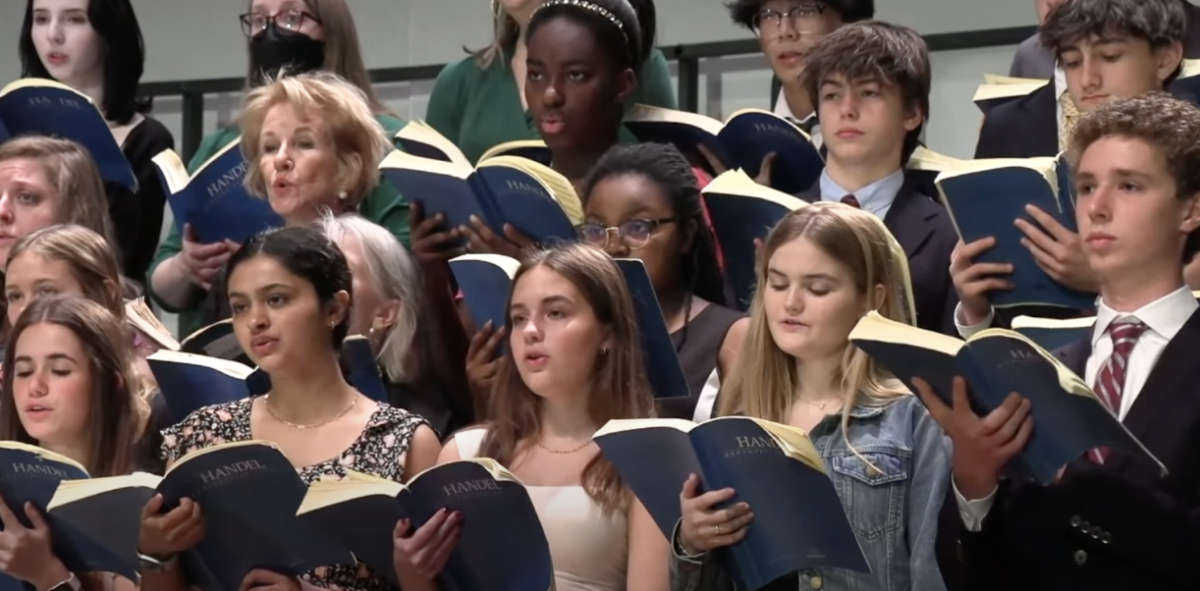Last Tuesday afternoon, within the High Museum’s new Fast Forward exhibit, a collection that contains well-known artwork from the past 100 years, was another new sight. A small group of Westminster students made their way through the exhibit’s several rooms, discussing paintings, sculptures, and works in various other mediums, everything from Pablo Picasso to Jeff Koons.
These students, ranging from freshmen to seniors, are members of art teacher Lauren Sleat’s new semester-long Art History class, aimed at introducing teenagers to the art world outside of the classroom or studio.
“In actuality,” Sleat said, “the term ‘art history’ does not accurately describe the content of the course. When I was asked to teach AP Art History, I thought that it would be more fruitful for students to really gain a better understanding of what’s happening in art today.”
Senior class member Sarah Hakani was able to sum up the gist of the class by referring to the Fast Forward exhibit.
“The exhibit that we looked at that covered the last 100 years of art was literally just a snapshot of our class,” she said. “Seeing the transition in art in that amount of time shows that the meaning of art has shifted completely. Our class is based on the whole concept of art today, how it has changed, and how broad it is.”
In order to educate her students about current artists and art forms, Sleat employs videos, discussions, and almost weekly visits to the High Museum. These trips tend to follow a set pattern: the class arrives, views and critiques several pieces, and then makes their own work based on what they have seen. Beth Malone, coordinator of Teen Programs at the museum, and her assistant, Christina Wespheling, partner with Sleat to plan and conduct the visits.
Malone, who described her job as “FUN,” organizes all teen events at the High, including DJ School, Open Studio, poetry slams, and of course Teen Night.
“We want to inspire the class to think abstractly and to look at the world in a variety of ways,” Malone said. “We hope these trips help them form their own opinions about art and the world that inspired artists to create it. We want to inspire them to use art to create positive change and beauty in the world. There is so much possibility in Atlanta’s art community, and getting to show that to young people is my dream.”
Sleat’s reason for conducting a portion of her course in the High Museum is similar to Malone’s.
“The end goal of the program is for the students to feel comfortable in a museum or gallery setting and be excited to bring friends and family into the museum,” Sleat said. “The students should have a knowledge about the different types of work that are being made, whether they like them or not.”
The class’s response to the unorthodox idea of regular trips off campus has been overwhelmingly positive.
“Field trips at Westminster are such a rarity,” said senior San Williams. “The idea of having a class that actually goes out to learn instead of staying in and just looking at books is very innovative in a way.”
“We sit in the class and we study these people like Andy Warhol and Jackson Pollack,” said senior Lilly Nunnally. “Then we show up at the museum and see their work and we can’t help but appreciate them more than we expected.”
According to the students, it seems that one of the major benefits of the frequent museum visits is the chance to see famous artwork up close and in person. The students, beginning to recognize artists and their pieces at the High from videos and discussions in class, feel a greater appreciation for the visual arts in general.
“It’s cool how we’re starting to think about artists in the same way that we think about celebrities,” said senior Emma Payne. “When I see their artwork I think, their hands touched this, this is amazing.”
“You can almost touch it,” said sophomore Lenoir Kelley. “I actually almost touched a Jackson Pollack.”
The new field trips also have the effect of bringing the class together as a community.
“There’s been a real bonding between the class gap; we have ninth graders, we have sophomores, and we have seniors,” said Sleat. “I have never experienced the bonding and the dialogue that has taken place in any other kind of class that I have taught, and that includes teaching college lecture courses.”
According to Malone, ideas for upcoming visits abound. She personally hopes to introduce the class to curators Brett Abbott and Michael Rooks, go on a behind the scenes tour to learn about how art is stored, and do further work on an installation piece by Sarah Sze in the Fast Forward exhibit. The students expressed a desire to continue making their own artwork, as well as to learn more about the art of curating, perhaps eventually curating their own exhibit of student art at the High. Regardless, the frequent visits to the High are an innovation for Westminster that brings the people involved closer together as a group and to art as a whole.




